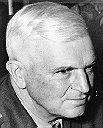Cold!

This is coolbert:
As was mentioned in a previous blog entry, the U.S. Army, as did it's adversary, did suffer a lot of cold weather injuries during the Korean War.
Especially during the period of December 1950 and January 1951.
Troops were just not prepared for the cold and DID NOT have the right clothing to keep them warm. After this harsh initiation to cold weather warfare, in the period subsequent to the end of the Korean War, the U.S. Army DID a lot of research into proper clothing for troops exposed to extended periods of cold weather.
To me, doing this research at this point in time does seem strange.
For a period of fifty years prior, the U.S. Army had bases and had stationed troops in Alaska.
And officers such as Simon Bolivar Buckner DID a lot of experimentation and research on their own into the problems of winter warfare.
And DID have successes.
And obviously the U.S. Army had observed and should have made the proper judgments based upon the German experience in Russian during the Second World War [WW2].
The Germans DID have a very big learning curve before they were able to master cold weather warfare and even use it to their advantage.
Surely with the "Cold War" at it's height, it MUST have been speculated that U.S. and Soviet troops might confront and fight in a cold weather climate. A cold weather climate that U.S. troops HAD to be prepared for [obviously, in Korea, U.S. troops were not prepared for the cold!!].
"Among U.S. Army and Army Air Force troops, there were over 90,000 cold injuries requiring medical treatment during World War II, and another 10,000 during the Korean War, accounting for 10% of all casualties experienced during these conflicts. German casualties due to cold injury during World War II were comparable or greater than experienced by the U.S. Army."
U.S. Army research into the cold weather "problem" was based upon and observation that there were two types of cold weather.
A wet cold and a dry cold.
Wet cold is encountered in climates where it gets above freezing during the day and goes below freezing during the night. The cycle is thaw/freeze, with a lot of wetness [such a place would be Korea].
Dry cold is encountered in climates where the temperatures go below freezing and stay below freezing for extended periods of time [months even]. Such a place would be Alaska.
Clothing had to be found that would protect against cold conditions that would vary from place to place around the world. Harsh climates such as Korea where so many U.S. troops suffered from frostbite, trenchfoot, and exposure to the cold made worse by inadequate clothing.
[it should be noted that of all climatic conditions existing on the planet, cold is the one condition man is least biologically prepared for].
"Humans do not acclimatize to cold weather nearly as well as they can acclimatize to hot weather, although repeated cold exposure does produce what is referred to as habituation. Proper training before deploying into cold-weather regions is more important for prevention of cold injuries than repeatedly being exposed to cold temperatures.
Following habituation, shivering is much less vigorous. This is advantageous because shivering is inefficient, and most of the heat produced is lost. Also, shivering can interfere with sleep causing fatigue.
With habituation to repeated cold exposure, humans adjust mentally and emotionally. Training outdoors in cold weather before deployment will help build confidence in soldiers' ability to physically, mentally and emotionally contend with the stress of cold-weather conditions."
Solutions were found to the cold weather problem.
Wool was found to be the ideal solution. Layers and layers of wool clothing will protect the soldier from cold.
And wool, even when wet, still retains insulating qualities that other materials do not, such as down.
Wool became the material of choice for the soldier operating in the cold.
And an entire ensemble was designed.
Layers and layers of wool clothing completed the ensemble.
And it DID work. Soldiers wearing this ensemble would be warm, even in the wet cold environment.
But there was a problem with this ensemble.
It became so bulky from all the layers that the soldier, while being warm, was not able to move and perform the normal physical tasks required of the soldier in the field, especially for the infantryman.
Re-design of the ensemble was required, and was done. A better ensemble that did protect the troop in the field from all manner of cold, where ever in the world that troop might have to fight.
Particular attention was paid to cold-weather footwear. From research was developed the "Mickey Mouse" boot. This was a real innovation. Two layers of rubber with wool [felt??] sandwiched between the rubber layers. Kept the foot warm in all cold conditions. A troop only needs to have a pair of dry wool socks on the inside for the warmth.
I think it is of significance that the U.S. Army does recognize that cold weather warfare does require special clothing, equipment, and training.
All officers of the U.S. Army are more or less required to complete one of two courses during their career.
One is the basic parachutist course.
The second is the cold weather warfare training course!! It seems these two courses are an excellent filter mechanism. Those officers that do not have the stamina or the mental wherewithal to complete either one of these two course will just not make good officers and leaders.
coolbert.

0 Comments:
Post a Comment
Subscribe to Post Comments [Atom]
<< Home